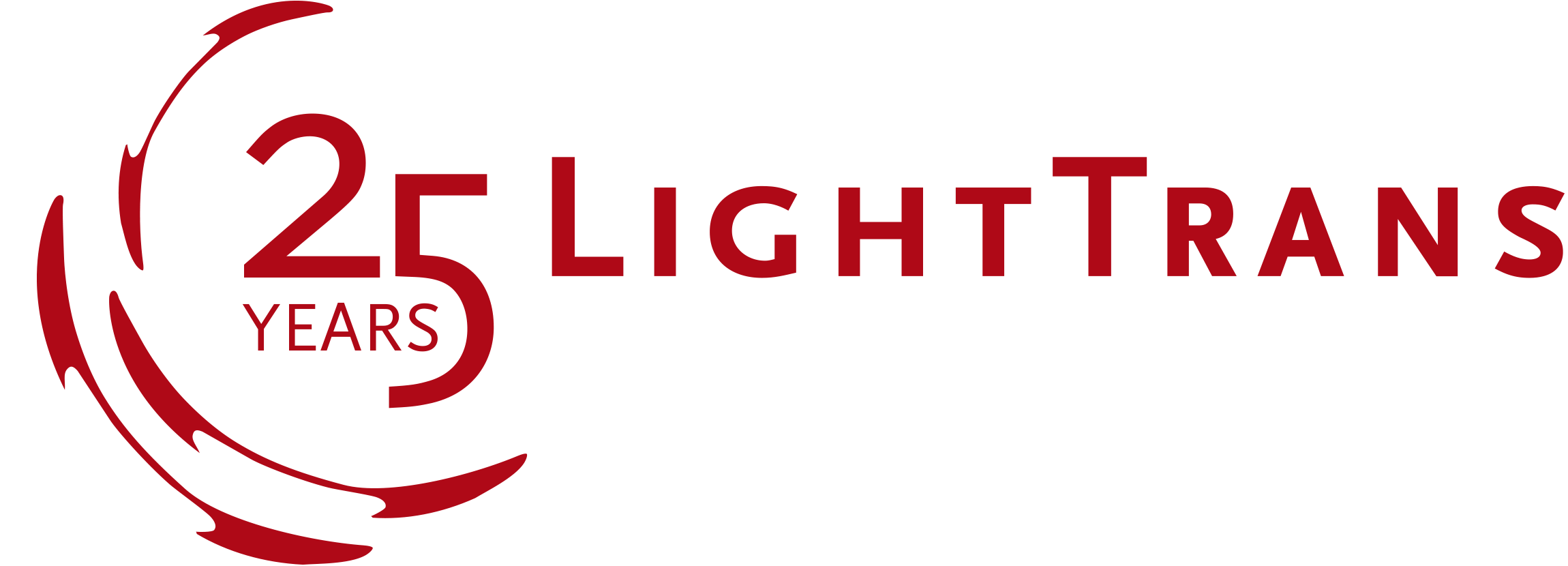What’s new in our Optical Modeling and Design Software?
Vectorial Effects in High-NA Focusing Systems
In high-NA focusing systems, the vectorial nature of light starts to play a non-negligible role and it may affect the focal spot. Input polarization, the direction-dependent Fresnel coefficients at the surfaces and the diffraction effect that dominates the propagation of the field in the focal zone must all be considered in order to make reasonable predictions about high-NA setups.
In VirtualLab, all these effects can be included for the investigation of your system, and the focal fields can be calculated very efficiently.
Customizable Parameter Run and Parameter Coupling
To evaluate the actual performance of an optical system often requires the inclusion of complex real-world parameters like fabrication errors, misalignment, and even thermal/vibrational perturbances.
The Parameter Run in VirtualLab Fusion allows for the definition of such parameters in a completely customizable manner according to each specific case. Moreover, optical parameters may mutually influence each other, so that they do not change independently, but in a coupled way. VirtualLab also provides a customizable Parameter Coupling for the definition of any coupled parameters in the system.
Focal Region Investigation
Among the various types of optical components, lenses are probably the most widely used and focusing is possibly the most typical task. Although it might seem trivial, the behavior of light in focal regions can be complex and thus deserving of in-depth investigation. As an example, in the case of focusing with a high-NA objective lens, the focal spot is well known to show asymmetry, and consideration of the vectorial nature of light turns out to be necessary. In VirtualLab, the properties of light in focal region can be thoroughly investigated with the help of different kinds of detectors, and with the ParameterRun function the field evolution through the focal region can be analyzed as well.
Read moreProgramming Custom Sources
Sources are yet another extensively customizable module in VirtualLab Fusion: you can adjust at will their wavelength spectrum, spatial coherence properties, transversal shape, and polarization, among others. Of all those, let us at present concentrate on the last two. You can find below a thorough tutorial on the Programmable Light source (which includes a detailed hands-on example) for you to follow, should you wish to learn to program your own sources. Additionally, we offer another example, in a more condensed format, that illustrates how to generate radially and azimuthally polarized light via programming.
Read moreProgramming Custom Functions
In our previous newsletter we already pointed to VirtualLab Fusion’s extremely modular nature, combined with its potential for customizability, as one of the fundamental strengths of the software, and went on to highlight programmable surfaces as just one instance thereof. We continue here in the same vein, only this time we move on to transmission functions: a well-known concept from Fourier optics – further enhanced by VirtualLab’s fully vectorial, electromagnetic approach – transmission functions constitute a good way to include idealized components in your optical system. Learn, with the help of the tutorial and examples listed below, how to program your own custom functions in VirtualLab Fusion!
Read moreProgramming Custom Surfaces
One of the fundamental strengths of the optical modeling and design software VirtualLab Fusion lies in its extremely modular approach: a gateway to provide maximum versatility to the user. This versatility is additionally turbocharged by the fact that many of the aforementioned modules which constitute VirtualLab allow for customization via data import or programming. In this newsletter we take a closer look at how to program custom surfaces. We present below a thorough tutorial on the topic which includes a simple example rolled out in-depth, and one additional programming sample for further illustration.
Read moreNon-Paraxial Polarizer and Stokes Parameters
Polarization effects often play an important role in modern optical research and engineering due to the vectorial nature of the electromagnetic field. Linear polarizers (e.g. wire grid polarizer) are probably the most commonly used optical elements for the manipulation of the polarization state. Although in most cases polarizers are designed for paraxial situations, they are also used in non-paraxial setups, e.g. in the focal region behind a high-NA lens or for the measurement of the Stokes parameters behind a highly tilted polarizer. In VirtualLab Fusion we provide a model for polarizers in non-paraxial cases. Moreover the simulation results obtained with VirtualLab show good agreement with the reference.
Read moreMeet us in the USA this October
Learn from our optical engineering experts how to use VirtualLab Fusion efficiently.
Register for our hands-on training in Santa Clara and our seminars in Santa Clara & Tucson.
Training in Santa Clara | California
15 – 19 October 2018
Seminar in Santa Clara | California
22 October 2018
Seminar in Tucson | Arizona
26 October 2018











